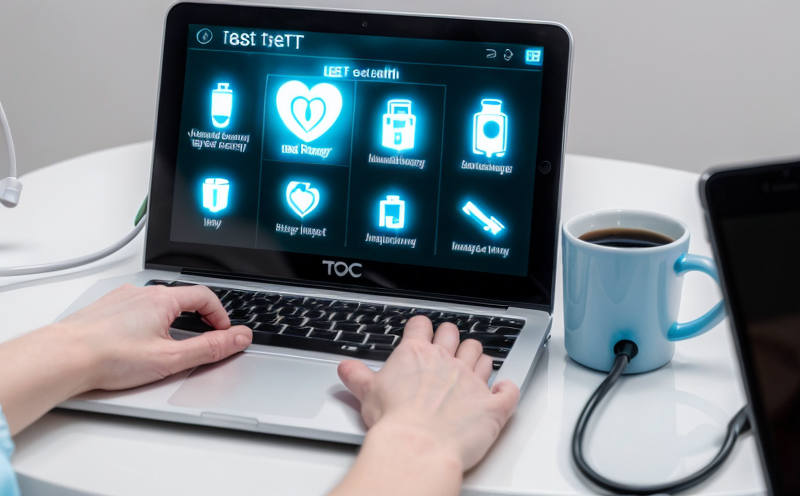EN 301 489 EMC Testing for Wireless Health IoT Devices
The European standard EN 301 489 specifies Electromagnetic Compatibility (EMC) requirements for wireless communication devices. This test ensures that medical and health IoT devices operate without interference and do not cause harmful electromagnetic disturbances in their environment. Compliance with this standard is essential for the successful commercialization of such devices, particularly in healthcare environments where interference can lead to critical malfunctions.
Our comprehensive EMC testing service for wireless health IoT devices follows the guidelines set forth by EN 301 489, providing a robust framework that covers all aspects from initial design considerations to final product validation. This includes ensuring that devices meet stringent limits on emissions and immunity levels across various frequency bands relevant to healthcare settings.
The process begins with thorough preparation of the device under test (DUT), which involves understanding its operational characteristics, identifying potential sources of interference, and simulating real-world scenarios where the DUT might be used. Our team utilizes state-of-the-art facilities equipped with Class A and Class B equipment to perform both emission and immunity tests according to EN 301 489.
Customer Impact and Satisfaction:
Ease of Compliance: By offering specialized testing services tailored to the unique needs of medical IoT devices, we streamline the compliance process for our clients. This reduces time-to-market while minimizing risks associated with non-compliance penalties or field failures.
Enhanced Reputation: Demonstrating adherence to international standards like EN 301 489 enhances a company’s reputation among stakeholders, including regulatory bodies and end-users who prioritize safety and reliability in healthcare solutions.
Patient Safety Assurance: Ensuring that medical IoT devices comply with EMC regulations helps protect patients by preventing malfunctions due to electromagnetic interference. This contributes directly to better patient outcomes and improved trust within the healthcare community.
Our team of experienced engineers combines deep technical knowledge with practical experience, ensuring accurate interpretation of test results against EN 301 489 requirements. We provide detailed reports that outline compliance findings along with recommendations for any necessary modifications to achieve full conformance.
In summary, our EN 301 489 EMC testing service offers comprehensive support throughout the entire product lifecycle—from concept development through final validation. By adhering strictly to international standards and using advanced instrumentation tailored specifically for healthcare applications, we ensure that your wireless health IoT devices meet all necessary regulatory requirements.
Why It Matters
Compliance with EN 301 489 is not just a compliance requirement; it plays a crucial role in safeguarding the integrity and effectiveness of medical IoT devices. In healthcare settings, where precision and reliability are paramount, any electromagnetic interference can lead to serious consequences ranging from suboptimal performance to complete failure.
EMC testing ensures that these devices function correctly within their intended environments without causing harmful emissions or susceptibility issues that could disrupt other electronic systems nearby. This is particularly important in hospitals and clinics where multiple medical devices are often operating simultaneously, increasing the likelihood of interference.
Failing to meet EN 301 489 standards can result in several adverse outcomes for both manufacturers and end-users:
Non-compliance with regulatory requirements, leading to potential fines or product recalls.
Increased risk of malfunctions during critical operations, affecting patient care.
Decreased market credibility due to reported incidents of device failures attributed to electromagnetic interference.
By investing in rigorous EMC testing early in the design phase and throughout production, companies can avoid these pitfalls. Our service provides a reliable pathway towards achieving compliance while enhancing product quality and ensuring patient safety.
Industry Applications
The medical sector is one of the key beneficiaries of EN 301 489 EMC testing for wireless health IoT devices. Within this context, various applications are relevant:
Smart wearable devices: These include fitness trackers and continuous monitoring systems designed to track vital signs like heart rate, blood pressure, etc., which must operate seamlessly without causing interference.
Wireless patient monitors: Used in intensive care units (ICUs) and other hospital settings, these devices need stringent EMC testing to ensure they do not disrupt other critical medical equipment or be affected by it.
Intraoperative monitoring systems: These systems are used during surgical procedures to monitor physiological parameters such as blood flow or brain activity. Any disruption could compromise patient safety and surgical outcomes.
Our service supports manufacturers of these devices by offering tailored testing solutions that address the specific challenges faced in each application area. Whether it's ensuring reliable data transmission over long distances or protecting sensitive electronics from electromagnetic disturbances, our expertise ensures that every device meets the highest standards set forth by EN 301 489.





